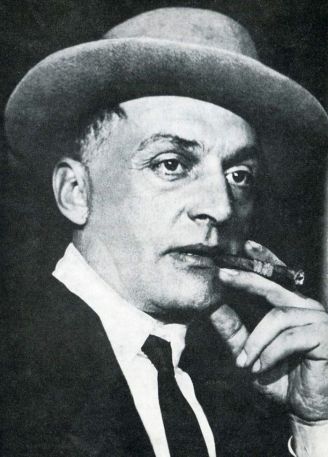
1884 – 1962
From 1903 to 1908 he studied law at the Kyiv University. In parallel, from 1905 to 1908 he studied at the Kyiv Art School. In 1907 he published his caricatures in the newspaper “Kievskaia mysl”.
In 1905 he visited Geneva, where he took lessons at the private art school of Franz Rubo. In 1908, on the advice of Rubo, he continued his studies at the Heinrich Knier private school of graphics and drawing in Munich. There, Meller met student Paul Klee and a group of artists, “The Blue Rider” (Der Blaue Reiter). After graduating from the Kyiv University, from 1908 to 1912 he received an art education from the Academy of Fine Arts in Munich.
In 1912-1914, together with Kazimir Malevich, Sonia Delone, Oleksandr Archypenko, Oleksandra Ekster, he participated in a number of exhibitions (Salon de Independent, Spring Salon and Salon D’Autone). His works have been exhibited alongside Pablo Picasso, Georges Breque and Andre Deren.
In 1921-1923 he was an artist of the T. Shevchenko Theater in Kyiv.
In 1922, Les Kurbas invited Meller to collaborate with the newly established theater “Berezil”. Meller was the main artist of “Berezil” for 12 years (1922 – 1933). Here, along with other specialized studios, Meller founded the Art Workshop. If the events of the 1930s had not prevented it, a school of Ukrainian scenography would have been established here.
In the performances “Gaz” (1923), “The Ruhr” (1923), “Jimmy Higgins” (1923), “The Machine Fighters” (1924), and “The Mass Man” (1924), he introduced elements of constructivism and expressionism to the stage. He was interested in the dynamics.
Many believe that Shakespeare’s production of “Macbeth” with director Kurbas (1924) was the culmination of his experimental phase and made Meller a leader among Ukrainian theater artists.
The stage was empty, instead of scenery large shields-screens, which determined the places of action – “Hall”, “Field” or “Gate to the castle”, etc. The actors used only the most necessary items, played in overalls and raincoats and were themselves as geometric shapes.
During the period of “Berezшl” Meller with Kurbas and playwright Mykola Kulish also made iconic productions: “Narodnyi Malakhiy” (1928), “Myna Mazailo” (1929), “Maklena Grasa” (1933). In them, the scenographer studied the stage rhythm, constructions, the relationship between body and space, form and style.
Vadim also collaborated with other theaters, including the Hnat Mykhailychenko Theater.
In 1924-1925 he worked as a film artist and book illustrator. In 1925 he received a gold medal at the International Exhibition of Contemporary Industrial and Decorative Arts in Paris. In the same year he took part in the International Exhibition of Theater Arts in New York. He became a member of the Association of Revolutionary Artists of Ukraine.
After the arrest and execution of Les Kurbas and Mykola Kulish, Meller continued to work in Berezil until 1946, which was renamed the T. Shevchenko State Theater.
The work of the artist of the Soviet period is significantly different from what he created with Kurbas.
During the Soviet era, Meller even received the title of Honored Artist of the USSR (1942).
In 1948, Meller became the chief artist of the Kyiv Theater of Musical Comedy and from 1953 to 1959 – the chief artist of the I. Franko Theater.
However, even in Soviet times, he defended the stage space with a single concept, broadcasting the main theme of the performance in “great form”. In the last years of his life, Meller was accused of formalism, dubbed a “bourgeois cosmopolitan.”